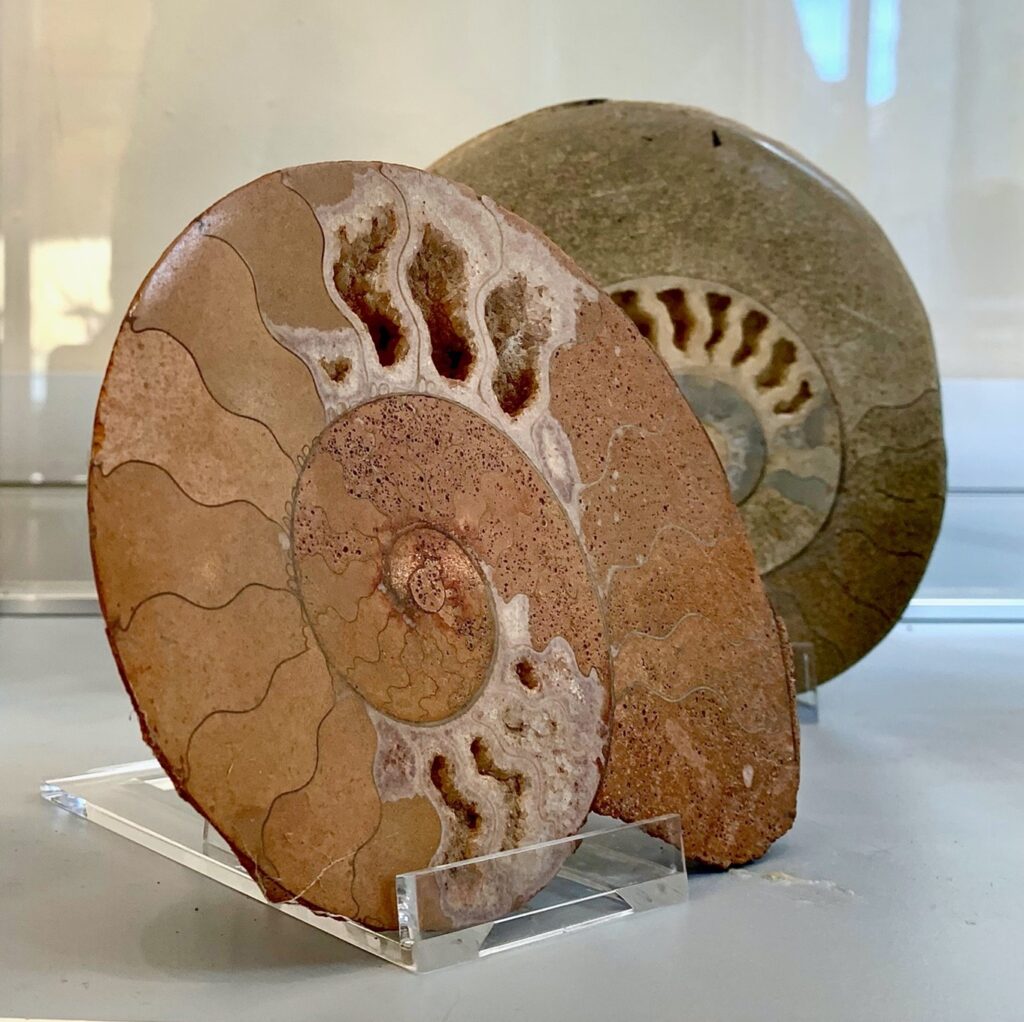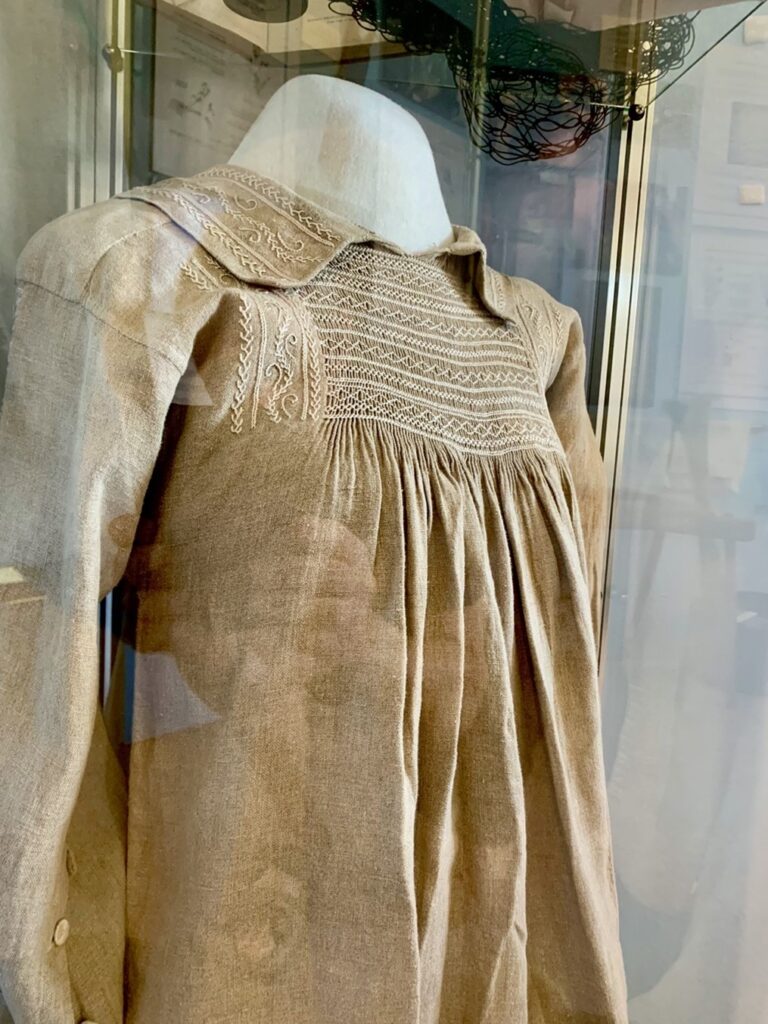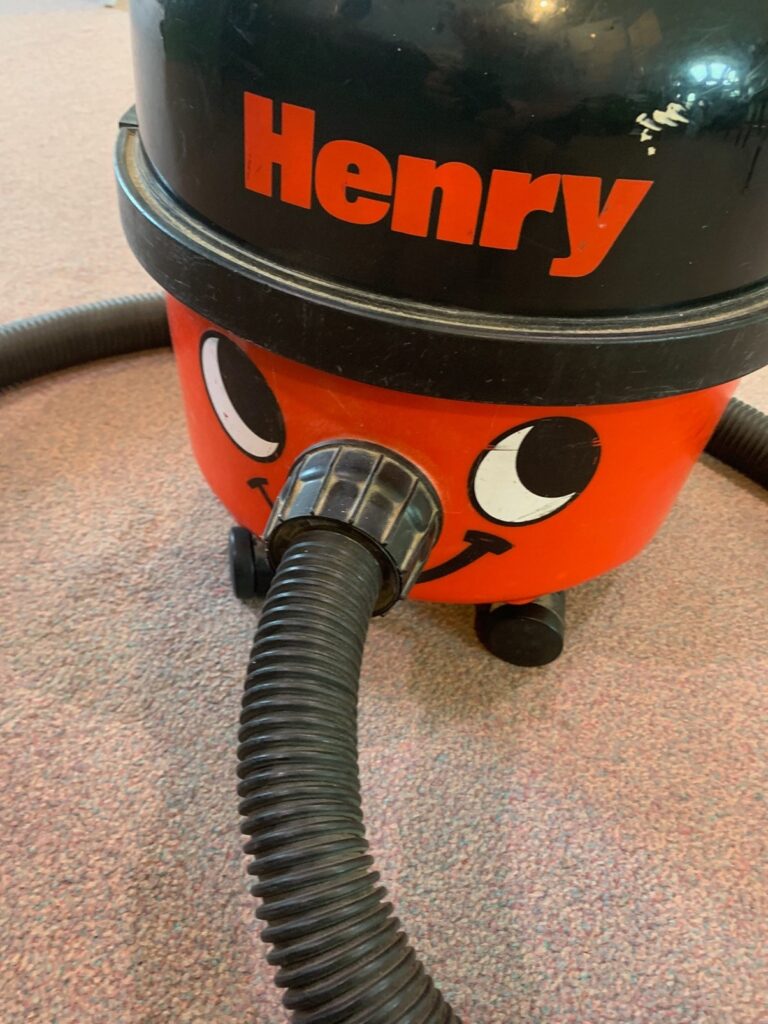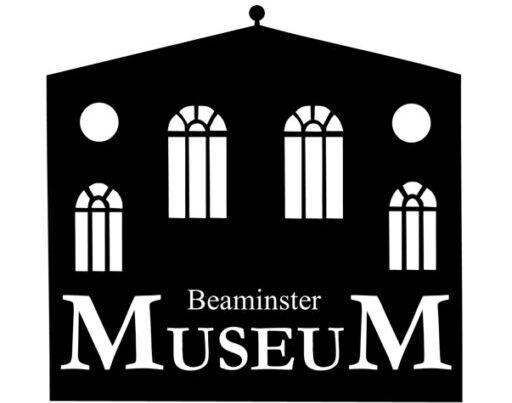
We have some wonderful Stone Age Paleolithic and Neolithic), Bronze Age, Iron Age and Roman artefacts; amongst them, this beautiful bronze bull from the late Iron Age, from Bulbury Camp, Dorset.
It is described in Archaeologia like this: “… a bronze object, evidently intended to be fastened to a rounded surface by four rivets. It consists of a rude representation of a bull, through the rudimentary legs of which the rivets passed. The tail-end is curved round and terminates in an eight-petalled flower, forming a kind of hook. The figure of the bull is coarsely executed, but the hooked portion is good in outline.”
The speculation was that this was either a helmet ornament or more likely, as there are a pair, a rein guide for a chariot. Whichever is correct, it is a beautiful artefact and certainly not a “rude” (crude) representation – search online and see if you find a better one from the Iron Age.
The fragment of anchor chain in the bottom of the case is from the same hoard.
On generous loan from Dorset museum
For a 3D model visit 3D Models Page
These are a couple of lovely polished cross sections of ammonites from our fossil display. Horn Park Quarry on the way between Beaminster and Broadwindsor, is an internationally important site for geology and fossils, showing that you don’t need to be at the coast to find fossils. Indeed we get finds brought to the museum from local gardens and allotments.

This is a linen smock, mid-C20th. Decorated with smocking, Dorset feathery stitchery and Dorset wheel buttons, it is believed to have been made by Miss M. Hamblin of Halstock.
The flax and hemp industry was at its height in the area around 1800 – but the industry was probably already established in the 13th century. Netherbury was by far the most significant local area for growing flax and hemp in the period 1782-93 but most of the raw flax was actually imported; what Beaminster and the local area were really good at was processing the flax and hemp.
This linen smock was made from flax, processed by retting, rippling, breaking, scutching and hackling – a series of actions to release and refine the flax fibres.
See the exhibits in the Museum on the process of turning flax into thread.


Beaminster was unusual in having a large number of clockmakers in the town for its size, with evidence for their work running from mid-17th century to the early 20th century.
We have a church Turret Clock, three longcase clocks showing the evolution in design from 1780, 1810 to 1850, and a typical late 19c clock formerly in the town hall, and an early electric clock.
This 8-day long case clock was made by Henry Peach Jnr. in the 1820s – it still runs and strikes in the museum today, 200 years later.
Beaminster museum is not just about things but about social history too, including the trades, businesses and employment that have helped Beaminster thrive. Henry vacuum cleaners were invented by Numatic, a company that started in Crewkerne in 1969, making industrial vacuum cleaners, but moved to Beaminster in 1974, where the Henry vacuum was born. The company occupied a site in Broadwindsor Road for 20 years before moving on to a bigger facility in Chard.
However, there is still a Henry to clean the museum.

